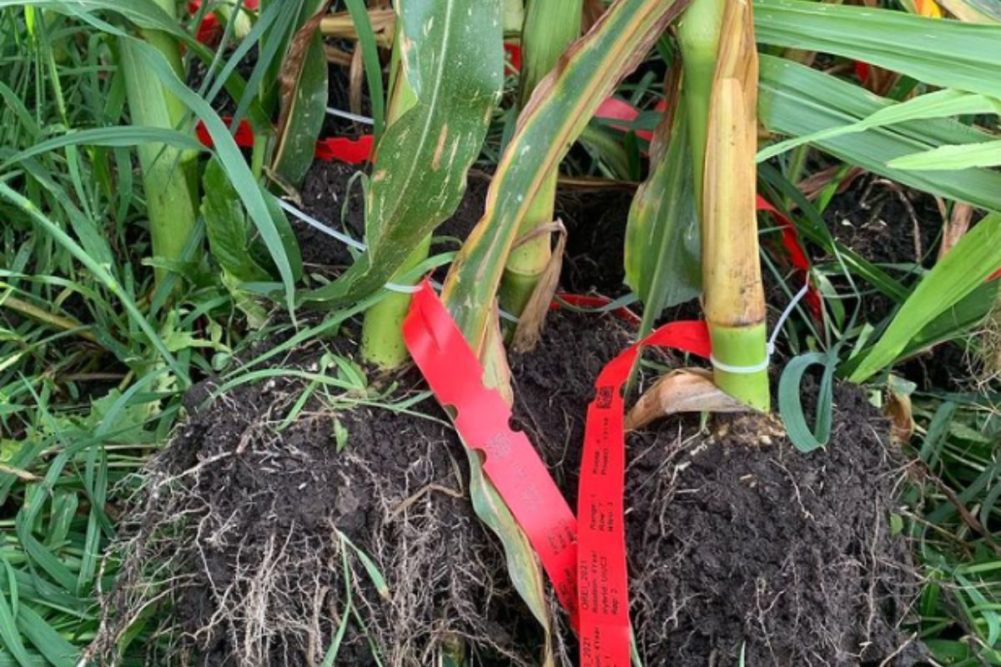URBANA, ILLINOIS, US — A group of researchers plans to study the overlooked attributes of corn roots and ways to manipulate the agroecosystem to optimize carbon storage, resource use efficiency and productivity.
“Unfortunately, the shallower root systems of many modern hybrids are not ideal under the changing Midwest climate,” said Carmen Ugarte, research assistant professor in the Department of Natural Resources and Environmental Sciences at the University of Illinois, Urbana-Champaign. “They also aren’t well suited for rainfed crops grown in diversified or organic operations that seek to tighten nutrient cycles and rely more on soil-derived fertility than added inputs. We are interested in plants that invest resources in the production of efficient roots without compromising yield.”
Researchers from the university received a four-year, $1.5 million grant from the US Department of Agriculture’s National Institute for Food and Agriculture. They will work with farmers to learn how they use information about crop and soil conditions to balance management goals.
In addition to optimizing yield, the team will work to develop corn roots that respond to changing soil conditions that are driven by management, like rotation length and diversity. Ideally, they’d like to see root systems that give back to the soil by providing ecosystem services even under different weather scenarios.
“We want root systems that can withstand high precipitation in the spring and be able to efficiently capture nutrients and water from deeper in the soil profile during the summer when the topsoil is dry,” Ugarte said. “Working with a multi-disciplinary team lets us envision high-yielding corn production systems that provide positive environmental services. We are interested in finding the ideal root model for this region. This model, if effective in the field, can help mitigate some of the environmental problems associated with modern agriculture by preventing leakage of nutrients to surrounding water systems and the atmosphere.”
The team will use a set of soil and root traits to quantify the ecosystem services provided by organic grain farming systems. This research will be carried out in part at the newly USDA-certified Illinois Organic Trial in the U of I South Farms complex.
“We will study root traits for a large number of corn hybrids and their parental inbreds,” said Martin Bohn, who leads the organic corn breeding program in the Department of Crop Sciences. “Combining the resulting phenotypic data with genetic information, we will define root ideotypes that are perfectly adapted to organic production systems and find the genes involved. Knowing the genetic basis of root architectural and functional traits will accelerate our breeding efforts. However, the key is testing experimental inbreds and hybrids under different management and fertility backgrounds at the Illinois Organic Trial and at on-farm locations across the Midwest.”
Ultimately, the researchers hope to develop corn that performs well in diverse organic systems throughout the Corn Belt. Another goal is to empower farmers to optimize their management while minimizing the environmental footprint of grain production systems, benefitting soil and water, and air resources and farmers’ bottom lines.




